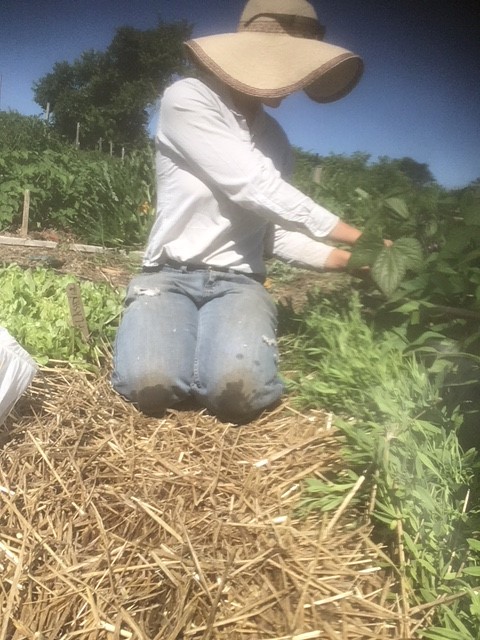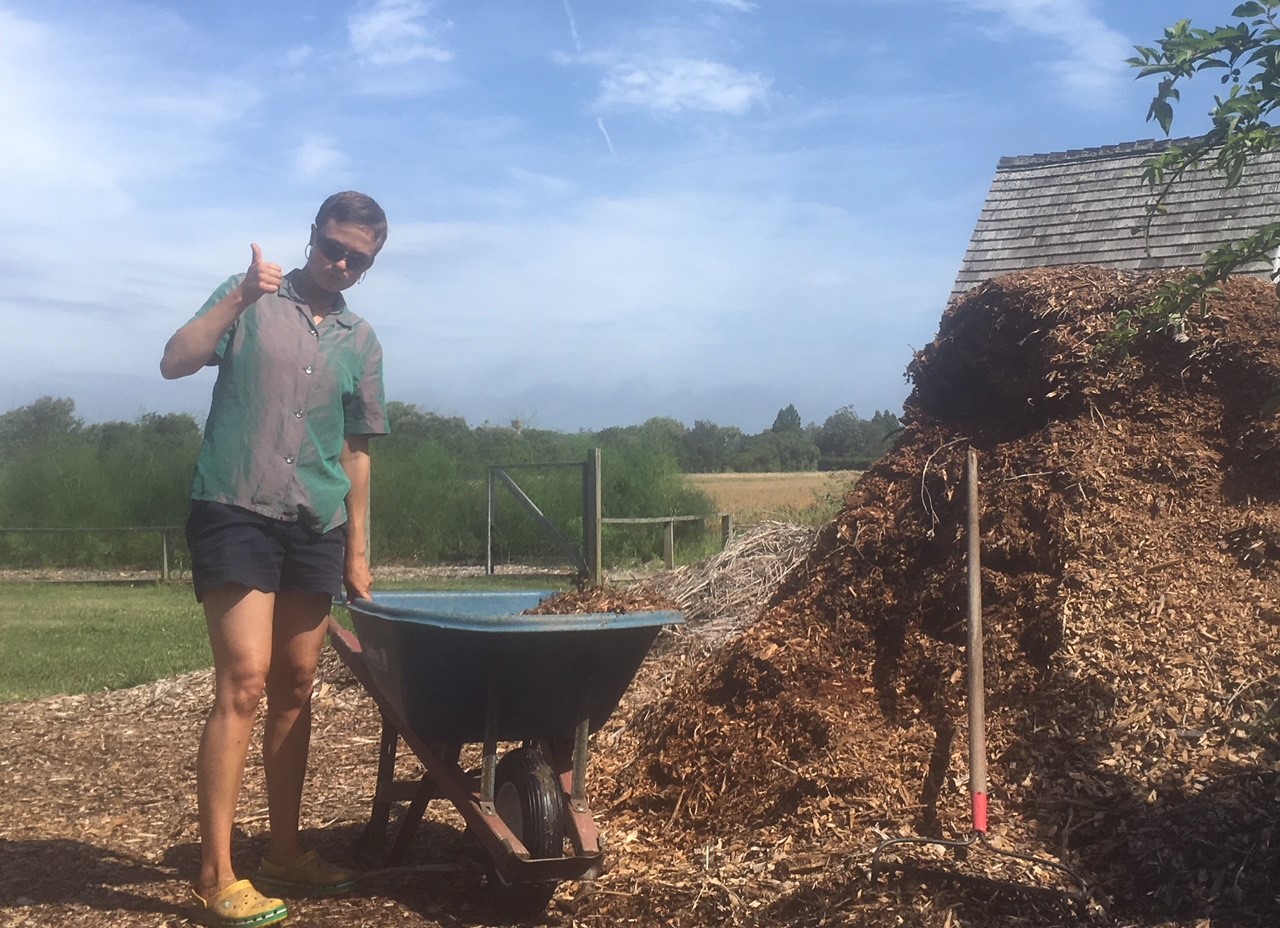
Japanese Garden Tools Vs. American: What’s the Difference?
You may have seen Japanese gardening tools popping up more in stores and online. Sure, they&rs… Read More

When people think of exercise, most picture indoor places, like the gym, in-home exercise treadmills, and sweaty yoga studios. But this is a fairly recent mindset. If we go back to our roots, “working out” was checked off the to-do list just by living, through everyday activities like gathering food or walking to school or work. So, let’s embrace our ancestral ways and take our physical activity back outside! One excellent way to accomplish this is by undertaking projects in the garden or yard of your home. I will discuss the best way to use your body while gardening or doing yard work, from things I’ve learned from three years of farming.
When you are moving the fastest while exercising, you are not necessarily doing the best for your body. When you work outside in an uncontrolled environment, the heat of the sun, mixed with your exertion, can take its toll. Often, pushing yourself to lift more weight or bending in half to weed quicker, makes it easier to injure yourself. Instead of high speed and a quicker heart rate, when working in the outdoors you should be conscious of form. This is essentially ergonomics, a term relating to design for efficiency and comfort in your work space. Ergonomics doesn’t just mean comfortable tools and office chairs; it also implies correct body posture and streamlined movement.
Let’s start with mulching. Mulching is a common yard activity used to suppress weeds and add organic material to the soil. Usually you see people with a pile of mulch, a wheelbarrow, and a shovel. Shoveling is a task I try and avoid since it can easily strain your back muscles. It is also a time suck because one shovel load at a time is a slow, and therefore inefficient, way to fill a wheelbarrow. I was using this method at my first full time farm job when my boss, Jon, came over to correct my form using his favorite phrase, “this is a teachable moment.” Jon proceeded to teach me this pro tip: tilt the wheelbarrow over so its lid rests on the bottom of the mulch pile. Instead of fighting gravity to shovel the mulch up to a higher level (and thereby straining your back muscles), use a sturdy rake to pull the mulch from the pile into the lowered vessel.


Remember to switch your hand positioning while raking mulch into your wheelbarrow so you use both sides of your body.
Once you’ve packed in the material, it is time to raise the wheelbarrow to its upright position. Situate yourself on the side that is up in the air. Grip the edge and squat to use your body weight to pull the barrow back onto its three-point position, where both legs and the wheel are on the ground. Make sure to even out the material inside the barrow so the weight will be evenly distributed.


When tilting the wheelbarrow back to its upright position, bend your knees so that your legs do the lifting, not your back.
One important aspect to all of these gardening chores is mindful breathing. As you raise your rake to the top of the mulch pile, inhale and let that breath guide your arms upward. As you rake the mulch into the wheelbarrow, exhale loudly and tense your abdominal. It helps if you can hear yourself breathing because it creates a beat, like in music, which your body can then follow. It is also a good reminder to keep breathing. I often find myself holding my breath, tensed, waiting for the task to be done. With these tips, your mulching will not only go quicker, but it will also work the abs more, without tweaking your back.
Two other common gardening tasks are weeding and planting. You will often see people in their gardens, on their knees with a trowel and gloves. Other times they may be standing, but either way, their back is usually bent over. This may end up hurting you since all your upper body weight is supported by your lower back muscles. I’ve dealt with back pain since I started farming as a profession. I went to a chiropractor, not so much to get “fixed,” but to learn what I was doing wrong and how to correct it. After consulting with the chiropractor, we found the best posture for fieldwork. When weeding a bed, get as close to the ground as you can (this usually means finding a comfortable kneeling position). If you have bad knees, I recommend a foam board rather than knee pads, which can often fall off or come loose from crawling around.

This upright, back-bending posture is a classic gardening pose that can result in back pain.

But this kneeling posture, parallel to the bed, protects your back while working your abdominal.
Instead of facing the bed’s edge and hunching over the plants, place your body parallel to its contours. This will force you to twist your torso to the left or right as you plant seeds in a line or free dandelion tap roots from the soil. When working, you always want to remember to protect the back. It is a part of our body we abuse because it is very strong, but it can be overworked, especially from repetitive tasks undertaken with incorrect posture.
Lastly, let’s discuss raking. Even if you’re not one to get your hands dirty, you have probably raked leaves at some point. Raking is a job that can quickly tire the arms and shoulders. Most of us have a dominant hand, which can quickly tire. By relying too much on that one side, we weaken our body over time. In our society that values efficiency, it seems prudent to use the dominant hand, but health wise it is not ideal. One way to alleviate the aches is to remember to switch sides. People get frustrated at first when using their weaker side, because they find the work goes slower. Suppress the urge to quickly switch back to your dominant. Consider your movement and how it is affecting both the speed of the task, and your body. Of course, we won’t become ambidextrous overnight. But, like with our breathing, it is good to bring consciousness to how we move. So switch arms! Even if it feels funny and you go a little slower, your body and mind will appreciate it and thank you later on in your life.



Switching sides as you rake (or shovel) is helpful for a balanced workout.
Remember, it is not about how much you sweat, but mindfulness of proper form, efficient movement and regular breathing. This practice can be applied to all waking moments. Even in the kitchen, for instance, when you are standing chopping onions for dinner, take notice of which leg you have relaxed and which is supporting all your weight. As you work in your garden, when you stop your mind wandering and focus instead on how you move, you are actually meditating, conscious of the inner and outer world. You are now on the right path to strengthening your body.
